Typical Be’er-Sheva weather
Rainfall: Be’er-Sheva has been an oasis in the midst of a semi-arid desert since biblical times. In the Winter, the city gets an average of only 11 days of rainfall per year, though often when it rains–it pours, briefly flooding the Be’er-Sheva seasonal watercourse. Most of the rain usually falls in December, January & February. The year 2019/2020 was notably rainy (Sept.-May) and blessed Be’er-Sheva with a record amount of rainfall (257mm = 132% above the seasonal average). Occasionally, there are drought years. Be’er-Sheva no longer draws its drinking water from the wells of the lower ancient subterranean aquifer, but gets potable, desalinated water from the Mediterranean Sea via the desalinization plant in Palmahim. The city stands between the unique loess habitat above it, at its northern edge (ca.200 mm rainfall/year), that gets its runoff rainwater from an upper aquifer, and the drier, sandier desert below, stretching southward to the Sinai Desert (ca.100 mm per year).
its northern edge (ca.200 mm rainfall/year), that gets its runoff rainwater from an upper aquifer, and the drier, sandier desert below, stretching southward to the Sinai Desert (ca.100 mm per year).
As of March 2021, the City of Be’er-Sheva opened public access to Israel’s largest, man-made lake, covering ca. 5,261 sqm (1,300 acres), at the center of the Negev Desert, filled with recycled sewage and runoff rainwater. This lake site serves as a bird sanctuary and birding observatory, as well as a place offering light boating. Developed by the Be’er-Sheva Municipality and sponsored by the JNF.
Rainbows: Often immediately following the rains, as the sun comes out, we enjoy visions of stunning rainbows, even double rainbows; in the Hebrew Bible the rainbow signifies confirmation of the pact between the People of Israel and God. Also on occasion, the moon may have a halo or two around it.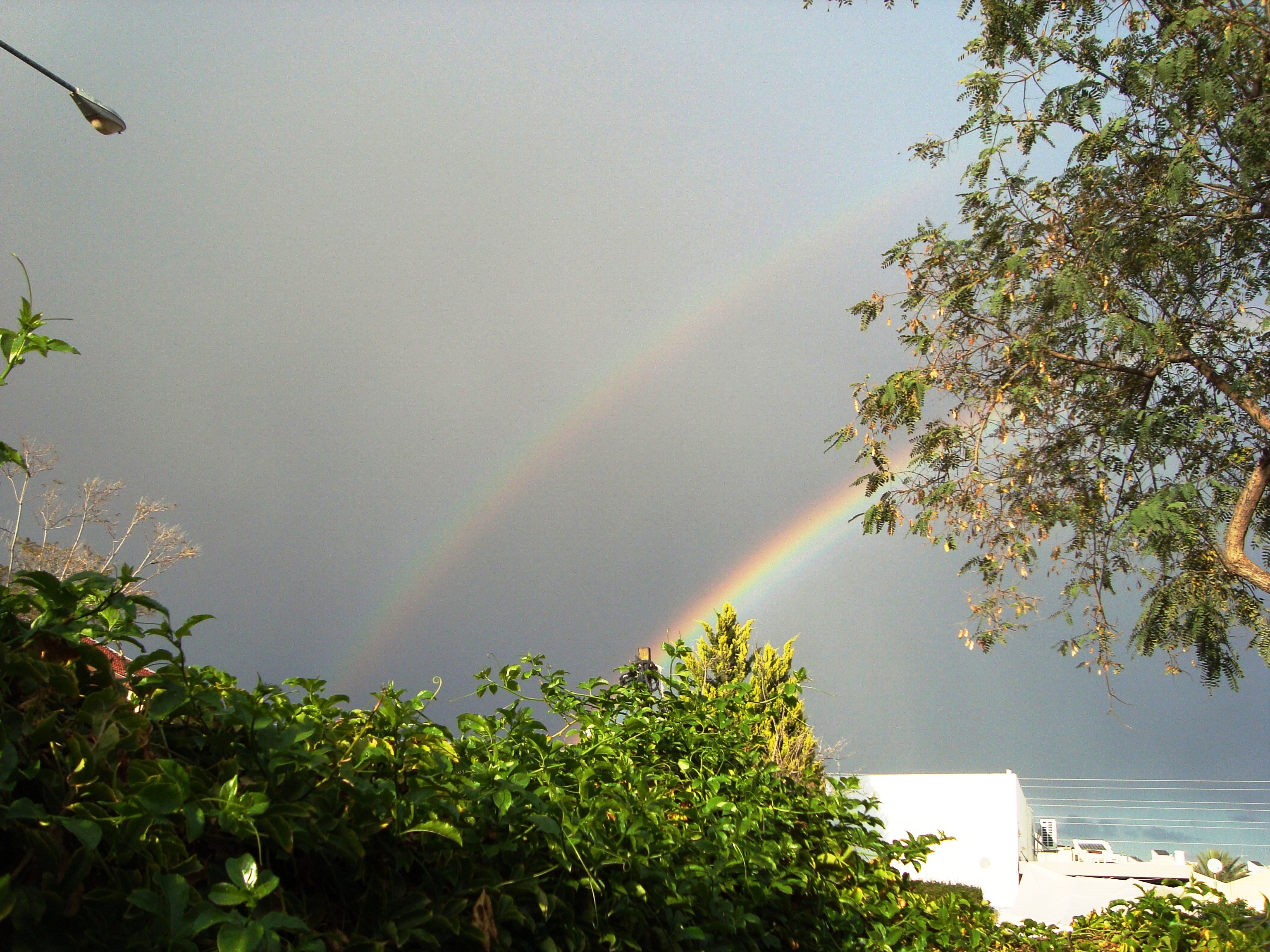

Solar radiation and temperature
In general, peak daily solar radiation levels are between ca.10:00-ca.16:30 and, althought the radiation is slightly less in winter, nonetheless, the regular use of good sunglasses is recommended all year round on sunny days, especially for people with light-colored eyes (to avoid macular degeneration).
Winter: The longest (2-week) cold-spell ever recorded in Be’er-Sheva (since meteorological measurements were first taken in 1919) occurred in March 2022, with lows of 2° to highs of 16° Celcius. In past decades, the winter nights sometimes went down to 0° Celsius (= 32° Fahrenheit) and the midday temperatures were more like 14°C (= 57°F). Mild snowfalls, that melted soon after sunrise, were recorded in: 1952, 1973 and 2000, but none since, though my car’s windshield was iced over by the morning dew once in January 2017. Now, the average winter temperatures are a low of ca.7°C (= 45°F) at night and reach a pleasant ca.24°-26°C (= 75°F+) on the clear, sunny days. It’s highly recommended to keep your home’s screened windows open by day for fresh air in the house and closed at night against the damp cold.
Summer: Global warming is felt in Be’er-Sheva. In the past, the long summer days’ highs averaged 34°-35°C (= 93°-95°F), sometimes spiking at 36-37°C (= 97°-99°F) for a day or two. But since 2017, the summer days have gotten markedly hotter, going from ca.16°C (= 61°F) at night to a very hot 35°-37°C (= 95°-99°F) at midday, with many more spikes of 39-42°C (= 103°-109°F). Usually, July had been the hottest month, coupled with a very high solar-radiation level at midday. However, in 2020, for 3 whole days and nights (May 17-19, 2020), there was a record-breaking, sharav hasa’ah (a sweltering hot spell with very dry easterly winds from the North African deserts), during which the nightly lows were 26°-27°C (=ca.79°-81°F) and the daily highs ranged from 38°–43°C (= ca.100°-109°F), with only 10% humidity!!! Then, between 28.8-5.9.2020, there was a double (150-year, record-breaking) khamsin, with sweltering highs in the mid-40°s C, with sandy skies, and heavy humidity at 75% or more, and high barometric pressure, that didn’t let up even during the nights!!! The Spring and Summer of 2021 suffered not only from COVID-19 and variant-D, but recurring incidents of sharav, every other or every third week between mid-May and the end of August… God bless airconditioning!!! During the Spring in 2023, there were 2 major periods of sharav; while August 2023 suffered 2 week-long periods of sticky, damp & very hot khamsin… again, thank God for airconditioning!!!
In any case, take care to use sunglasses and sunscreen regularly (30% protection is optimal), and for long durations outdoors add a wide-brimmed hat and a long-sleeved shirt (to avoid skin melanoma). Drink often, even if you don’t feel thirsty, to avoid dehydration. The more physically active you are, the more litres of water you must drink. Also, in general, it’s highly recommended keeping your house closed by day against the heat and dust and opening screened windows at night for cooler, moist, fresh air.
Humidity: In the desert, there is typically a huge differential in the daily temperature between that of the days and that of the nights, often producing dew or fog in the  mornings until the sun comes up. Be’er-Sheva has gotten more humid as the city has been built up and become greener. However, the humidity is relatively low all year round, compared to that of the other cities to the north and on the Mediterranean coast. On average, January is the most humid month and May the least humid. Every day in the desert summer, the humidity is highest (over 80%) at night, over 50% in the early morning, about 25% at midday, and rises to ca.70% come evening. So, the days are mostly hot and dry, while the nights are generally cool and moist.
mornings until the sun comes up. Be’er-Sheva has gotten more humid as the city has been built up and become greener. However, the humidity is relatively low all year round, compared to that of the other cities to the north and on the Mediterranean coast. On average, January is the most humid month and May the least humid. Every day in the desert summer, the humidity is highest (over 80%) at night, over 50% in the early morning, about 25% at midday, and rises to ca.70% come evening. So, the days are mostly hot and dry, while the nights are generally cool and moist.
Winds: In Be’er-Sheva, mild winds tend to rise every evening towards sunset, as the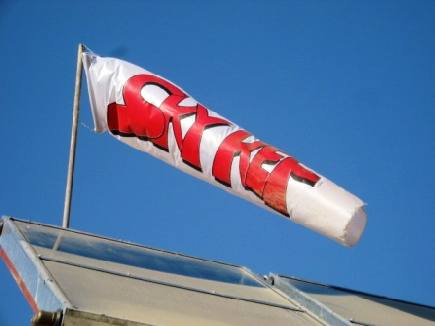 weather cools down, averaging 11 km/h (= 7 mph). When there are more drastic changes, such as when a hot-spell breaks or right before a heavy rain or sandstorm, the gusts may reach 74 km/h (= 46 mph). Such gusts may even bring giant tumble weeds (bigger than my compact car) into the city! Very rarely, every decade or so, there may be sudden gusts of wind, lasting only 10-15 minutes that exceeding 100 km/h; this happened on May 2nd, 2007 and again in January 2016, blowing down tree branches, solar panels, pergolas, etc.
weather cools down, averaging 11 km/h (= 7 mph). When there are more drastic changes, such as when a hot-spell breaks or right before a heavy rain or sandstorm, the gusts may reach 74 km/h (= 46 mph). Such gusts may even bring giant tumble weeds (bigger than my compact car) into the city! Very rarely, every decade or so, there may be sudden gusts of wind, lasting only 10-15 minutes that exceeding 100 km/h; this happened on May 2nd, 2007 and again in January 2016, blowing down tree branches, solar panels, pergolas, etc.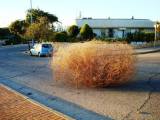
Night-time in Be’er-Sheva
Be’er-Sheva is usually, relatively quiet at night; we don’t suffer from much sound pollution in the residential areas. Though most modern cities now suffer from a certain amount of ‘air and light pollution’ that obstructs the visibility of starlight within the city limits, we can often see the 4 closest planets in our Solar System and stars galore from any unlit spot in the city without a telescope or binoculars. In fact, the night sky here is typically clear and stunning–one can clearly see Earth‘s closest planetary neighbors just before sunrise or soon after sunset: Mercury, Mars, Venus, Saturn and even Jupiter at certain times of the year. Also, located directly above us every October are the nearest star cluster, the Pleiades, and our closest neighboring galaxy, the Andromeda Galaxy (2.5 million light years away) from any unlit spot in the city. Moreover, every year on the cloudless nights from August 11-15, between 23:00 PM-1:00 AM, it’s possible to go to an unlit area with an open sky view, spread a blanket on the ground, lie on your back and watch the Perseids meteor shower with the naked eye—tens of ‘falling stars‘ per hour! I do it every year in my back yard in the Ramot Herzl neighborhood–but don’t blink or fall asleep!
Occasional climatory conditions
About once a year, for a day or two during the summer, there may be a hamsin, a wave of humid heat that comes in from Egypt and the Mediterranean, causing a couple of very unpleasant, hot, sticky days and stifling nights. In contrast, several times a year, when there are rapid seasonal changes, sharav conditions may develop; this is when extremely hot, dry winds suddenly blow in, occasionally followed by a sandstorm or hailstorm, coming from our Arab neighbors across the Jordan River or the Red Sea. Sometimes, it’s possible to see little dust twisters out in the dry desert nearby. If the sky starts turning a sickly yellowish color, rush indoors if possible and close
develop; this is when extremely hot, dry winds suddenly blow in, occasionally followed by a sandstorm or hailstorm, coming from our Arab neighbors across the Jordan River or the Red Sea. Sometimes, it’s possible to see little dust twisters out in the dry desert nearby. If the sky starts turning a sickly yellowish color, rush indoors if possible and close
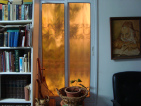 all the windows; otherwise, turn your back to the wind and cover your face, preferably with a cotton scarf or a kuffiyah (i.e., a Bedouin kerchief, part of their classic headdress), which filters the sand and lets you breathe. If you’re riding a bike or a motorcycle, stop and get off; while biking, I was once shoved off the road by a fast-rolling tumble-weed larger than myself and my bicycle.
all the windows; otherwise, turn your back to the wind and cover your face, preferably with a cotton scarf or a kuffiyah (i.e., a Bedouin kerchief, part of their classic headdress), which filters the sand and lets you breathe. If you’re riding a bike or a motorcycle, stop and get off; while biking, I was once shoved off the road by a fast-rolling tumble-weed larger than myself and my bicycle.
Rare climatory conditions
Mild snowfalls, that melted soon after sunrise, were recorded in: 1952, 1973 and 2000, but none since, though surprisingly, my car’s windshield was iced over by the early morning dew once in January 2017. An equally rare occurrence in the Negev Desert capital, Be’er-Sheva, was when rain actually fell on the first day of Summer, 21.6.2017.
The last serious hailstorm occurred suddenly on a warm, sunny October afternoon in 1997 (during the Sukkot/Tabernacles holiday), raining down dangerous & damaging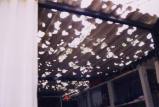 hailstones the size of golf balls for about 5 min.
hailstones the size of golf balls for about 5 min.
Earthquake preparedness
Over the past 50 or so years, at least once a decade, a moderate earthquake (2.6-6.5) is felt in Be’er-Sheva–none of which has done any significant damage, nor taken any lives. Although the Dead Sea is only ca.75 km from here and lies along the Jordan Rift Valley (a.k.a. the Syro-African Tectonic Fault), there is no historical record of any serious earthquake damage to Be’er-Sheva in the 6,000 years of its human habitation. However, there will certainly be more such occurrences. I recall earthquakes that were felt in Be’er-Sheva in 1971, 1983, 1995, 2004, 2008, 2017, more recently 4.4 Richter on 15.5.2019 & 6.5 Richter on 11.1.2022. As such, for safety sake, don’t put fragile or heavy items on high, open shelves, and cabinets & shelving should be anchored to the walls. If you hear a low, ominous rumble or feel the earth begin to shake–it’s best to go outside to open ground; if you can’t get outside, at least sit on the floor in a corner between two walls or under the most solid table you’ve got. Always add an ‘earthquake clause’ to your home insurance policy. If you live in a very old home that’s showing signs of cracks in walls or ceilings, call in a professional to fortify the structure–better safe than sorry.
Recommended clothing
The hot months: The most suitable clothing for the warm and hot desert months are made of cotton (especially undergarments and pajamas). Open thick-soled leather or cloth sandals are comfortable. Indoors, most places are air-conditioned, so it’s good to have a silk scarf, a cotton shawl, or a light jacket handy to prevent getting a chill. If you do sedentary work in a chilly air-conditioned office, I also recommend wearing sandals with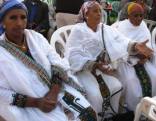 thick soles that can be worn with cotton socks while at work, to prevent cold feet from the stone or ceramic floors. For example, the Ethiopian-Jews, who come from a parallel climate traditionally wear climate-appropriate white cotton garments.
thick soles that can be worn with cotton socks while at work, to prevent cold feet from the stone or ceramic floors. For example, the Ethiopian-Jews, who come from a parallel climate traditionally wear climate-appropriate white cotton garments.
The cool months: Cotton undergarments with anything warm on top. Cotton pajamas with a cotton sheet and warm blankets on top. Cotton socks and closed shoes with thick soles, to prevent the cold from the stone or ceramic floors from making your feet cold.
By the way—In 2021, BGU inaugurated a School of Sustainability and Climate Changes.